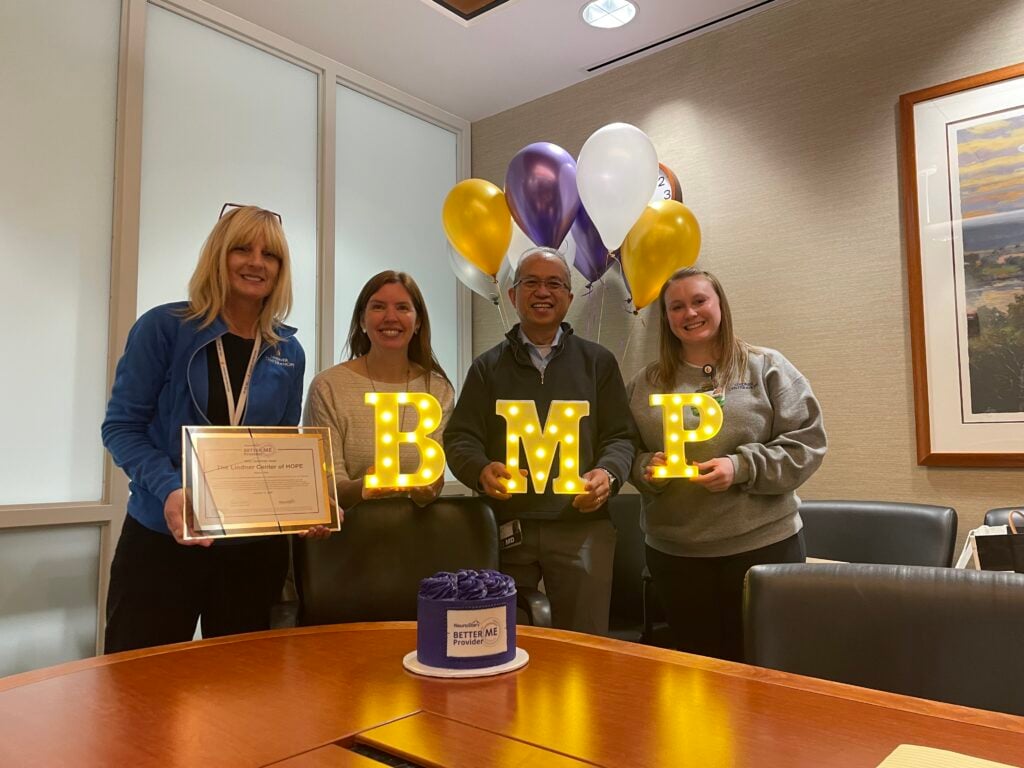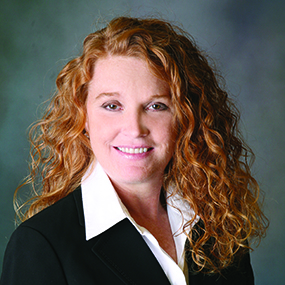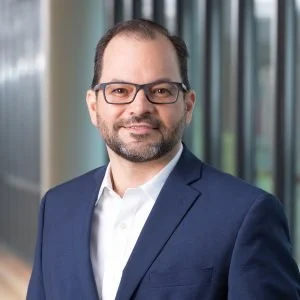 January 9, 2025 – Mason, Ohio – S. Craig Lindner, Chairman of the Board and Founder of Lindner Center of Hope, has named Michael Groat, PhD, President and Chief Executive Officer of Lindner Center of Hope in Mason, Ohio, effective January 1, 2025.
January 9, 2025 – Mason, Ohio – S. Craig Lindner, Chairman of the Board and Founder of Lindner Center of Hope, has named Michael Groat, PhD, President and Chief Executive Officer of Lindner Center of Hope in Mason, Ohio, effective January 1, 2025.
“The Board and I are confident that Dr. Groat will continue to lead the Center with excellence, with a strong focus on growth and the future. We look forward to entering this exciting new chapter with Dr. Groat at the helm,” said Mr. Lindner.
Dr. Groat shared his enthusiasm for the Center, “The Lindner Center of Hope is a special place. The staff bring warmth, compassion, and empathy to people facing complex mental health conditions, and blend this humanity with scientific expertise. I am thrilled to lead the Center’s team into a new era of growth and expansion that will broaden our reach.”
Dr. Groat joined the Center 13 months ago, in the role of Chief Clinical Officer, serving the last four months as interim CEO. He has a 16-year career in leadership in nationally renowned hospital, residential, and outpatient treatment programs, providing evidence-based mental health and addiction services for children and adults.
As President and CEO, Dr. Groat assumes leadership of all strategic and operational activities for the Center. Dr. Groat’s blend of leadership depth, clinical acumen, growth mindset, and his talent for creative and complex problem-solving will engage staff, improve patient experience, and drive organizational excellence. He has a proven record of successful partnerships with referrers, families, academicians, and behavioral healthcare organizations and will help build partnerships and grow capacity.
He is the former CEO of CooperRiis, a 95-bed residential program located in Asheville, North Carolina, and was Chief Clinical Officer of Silver Hill Hospital, a 129-bed hospital with seven residential programs, three inpatient units, and an outpatient clinic. He also previously served as the Director of Adult Services at the Menninger Clinic, overseeing its flagship professionals and executives’ program, subacute program, and outpatient clinic. Dr. Groat helped launch successful programs, including the framework for a grateful patient donor program at the Menninger Clinic, an aftercare support service at Silver Hill Hospital, expansion of CooperRiis’ community integration program, and an assessment service at Silver Hill Hospital. He has consistently driven increased patient satisfaction and high staff morale and helped launch successful patient outcomes.
Dr. Groat completed a four-year postdoctoral fellowship in the treatment of treatment-refractory personality disorders and other mental disorders at the Austen Riggs Center. He is Associate Clinical Professor of Psychiatry and Behavioral Neuroscience at the University of Cincinnati College of Medicine. He was previously the Chief Clinical Officer and Director of Psychology and Assessment at the Silver Hill Hospital, where he was also Associate Clinical Professor of Psychiatry at the Yale School of Medicine. While at Menninger, Dr. Groat was associate professor of psychiatry and behavioral sciences at Baylor College of Medicine. Dr. Groat has lectured widely on topics related to psychotherapeutic treatments, acute and intermediate levels of care, suicide prevention, personality assessment and recovery.
Lindner Center of Hope is currently in a $30 million campaign to support the expansion of treatment spaces and grow their endowment for recruiting and retaining the best clinicians. The Center expects to begin sitework for the expansion in the spring.
Lindner Center of HOPE in Mason, Ohio is a comprehensive mental health center providing exceptional mental health services and improving the health of our community. We achieve this through expertise, innovation, research, education, advocacy, and putting people first. We start by meeting individuals wherever they are on their journey and relentlessly pursue excellence in all we do.
Lindner Center of Hope offers patient-centered, scientifically advanced care for individuals suffering with mental illness. A state-of-the-science, mental health center and charter member of the National Network of Depression Centers, the Center provides psychiatric hospitalization, residential services, and substance use disorders treatment for adults, outpatient services for all ages, and partial hospitalization for individuals age 12-years-old and older, and research. The Center is enhanced by its partnerships with the University of Cincinnati College of Medicine and Cincinnati Children’s Hospital Medical Center as their clinicians are ranked among the best providers locally, nationally and internationally. Patients and families who may benefit from Lindner Center services may call (513) 536-HOPE (4673) for an initial assessment. Learn more at LindnerCenterofHope.org.










